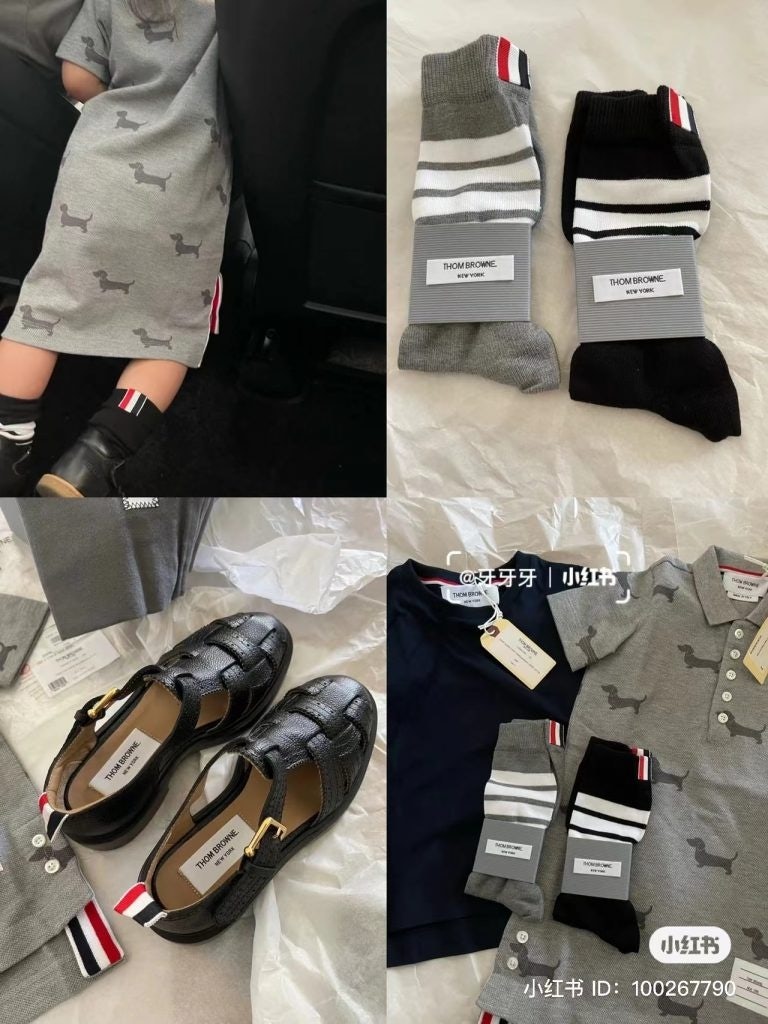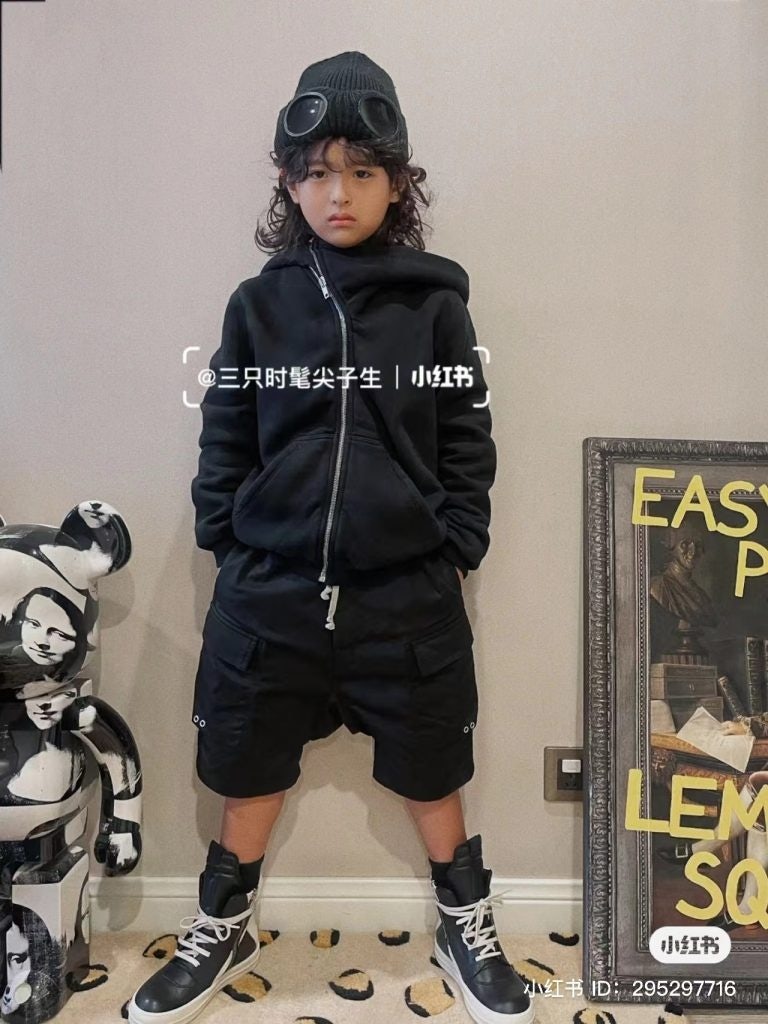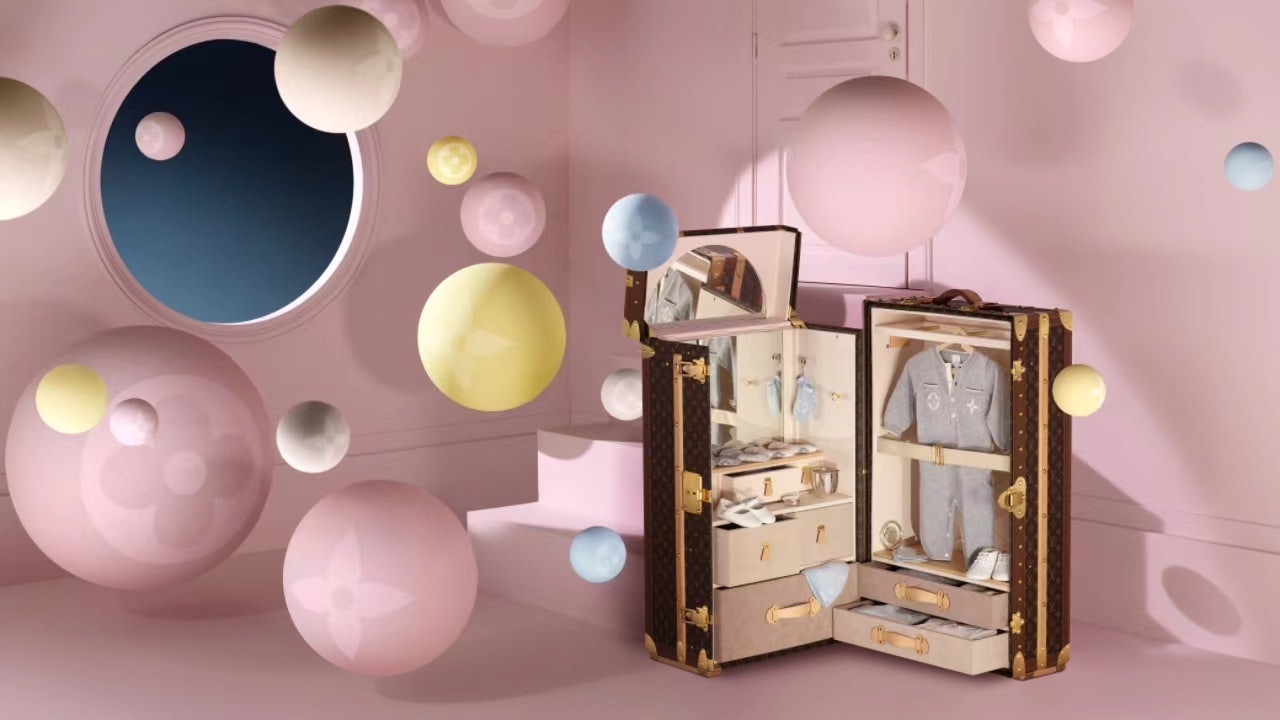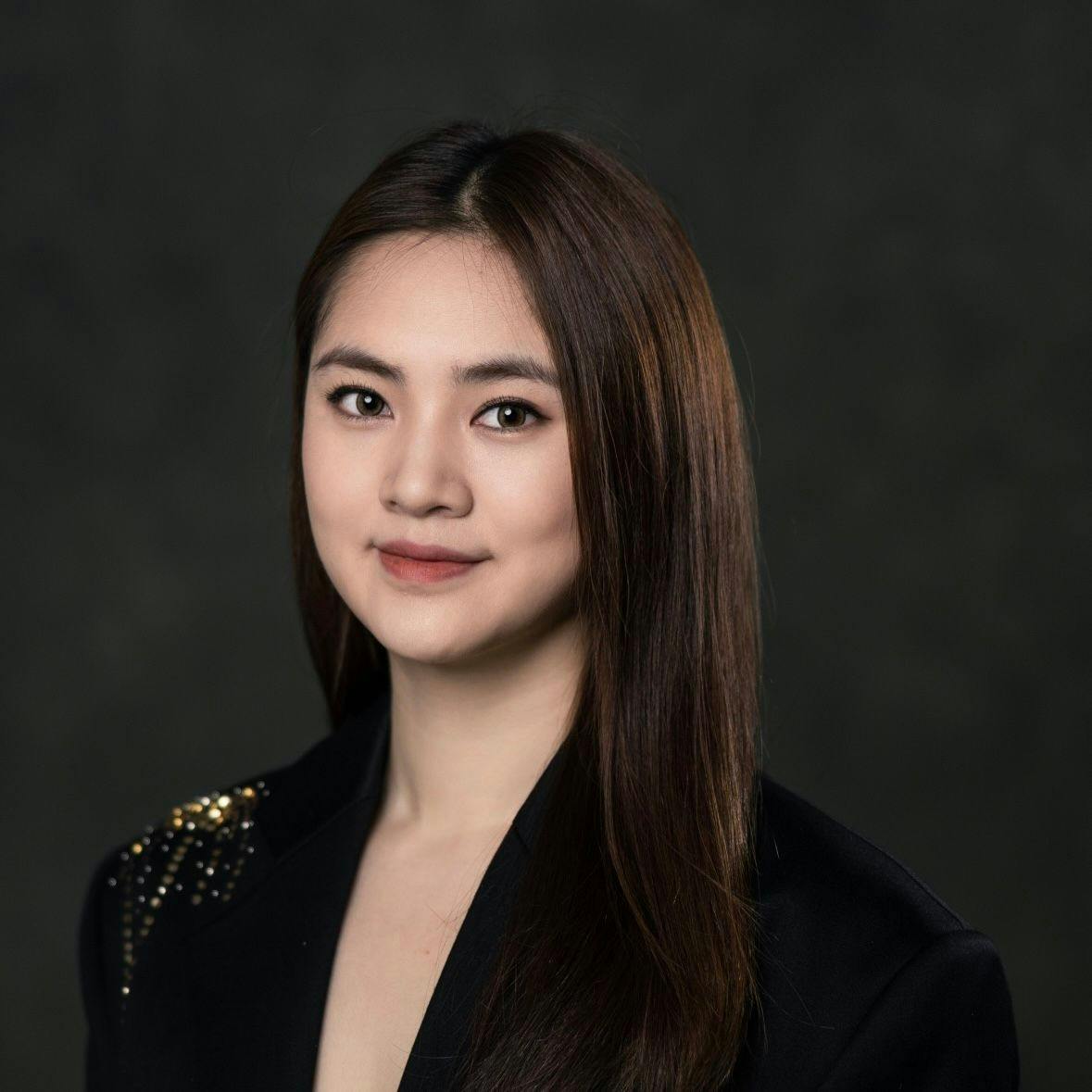Louis Vuitton’s baby collection is at the top of 29-year-old mother Julie Chan’s wish list.
After seeing teaser photos of the French luxury house’s first collection for newborns on social platform Xiaohongshu, Chan has been drawn to the baby pink and blue colorways.
According to Louis Vuitton’s announcement, the collection is set to launch on March 3 in selected stores worldwide, including China. Encompassing clothing, shoes, accessories, and objects featuring a fresh take on its signature monogram pattern, the line dresses infants in sizes up to 12 months.
Louis Vuitton isn’t the only luxury brand eyeing tiny fashionistas. Dior, Burberry, and Gucci have already released their own diminutive styles, while designer labels such as Stella McCartney, Thom Browne, and Rick Owens have also tapped into the sector.
Who is buying these high-end apparel items given how quickly babies outgrow them? And with China’s birth rate continuing to drop, why do luxury brands keep betting on the baby and childrenswear market?
Meet China’s parents#
As the oldest members of Gen Z will turn 28 years old in 2023, there is a generational shift in China’s infant and childrenswear market. A report by local consultancy Bigdata found that in the first half of 2022, more than 70 percent of mothers were under 30 years old. This young demographic aligns with the description that Antonello Germano, marketing manager at Daxue Consulting, shared with Jing Daily: “Chinese parents tend to be younger than those in the West, and they are tech-savvy and trend-savvy.”
Germano also breaks down the consumer profile, saying, “Young Chinese parents usually search for new trends online before purchasing products for their children. This applies to basically all categories of goods, from clothes to toys.” This decision-making process differentiates them from the older generation of parents in China.
Yaya Ya (@牙牙牙), a 32-year-old fashion KOL based in Nanjing, shares her 30-month-old daughter’s daily outfits on Xiaohongshu. She told Jing Daily that her parent’s generation prioritized functionality, such as thermal and windproof performance.

In comparison, young moms like Ya pay more attention to the quality of fabrics and are willing to spend on organic cotton and cashmere. As babies grow up, she adds, “Moms are more conscious of fashion, uniqueness, and brand recognition.” This preference is validated by the high viewership of the hashtag “niche childrenswear recommendations” on Xiaohongshu, tallying over 120 million reads.
Local parents born in the 1990s are driving change in China’s childrenswear market and bringing huge opportunities in the category. According to iiMedia Research’s projection, the market size of China’s maternal and infant sector will reach $1.1 trillion (7.63 trillion yuan) in 2024.
Seize luxury brands’ Very Important Customers#
In addition to luxury childrenswear brands like Bonpoint, more luxury houses are venturing deeper into the sector.. Brave Kid, a company owned by OTB Group that develops and distributes high-end children’s ready-to-wear and accessories collections, has several licensed brands in its portfolio, including Diesel, Marni and MM6 Maison Margiela. Jil Sander could soon join this lineup, says Renzo Ross in an interview with WWD in December 2022. “We are working on that, we’ve done some tests with cashmere [looks], we want to maintain the high range and I believe it will eventually happen.”
As shown in OTB Group’s 2022 financial results released on February 14, Brave Kid “made a significant contribution” to its parent company’s growth, reporting an increase in revenue of 25 percent from 2021. As such, expansion into childrenswear is now part of many luxury houses’ diversification strategy. In addition to childrenswear, “[luxury brands] have tapped into new segments in the last few years, such as beauty, pet and home accessories, and perfumes,” Germano lists.
Given that the purchase decision of childrenswear is usually made by parents, the target audience of the category is naturally adults. Chan admits she prefers childrenswear lines made by the luxury brands that she usually shops for herself. “Brands known for baby outfits like Bonpoint are another case. When I benchmark fully-fledged luxury brands for my little daughter, my go-to labels are the top choices.” This consumer path underlines the importance of very-important-clients and loyal clientele in the premium childrenswear segment. With the expansion of kidswear, a brand maximizes customer lifetime value, or the total income it can expect from a customer over the entire period of their relationship.
The evolution of the ‘mini-me’ trend#
It’s a common practice for parents to project their understanding of fashion onto their kids. Ya started posting her outfits on Xiaohongshu before giving birth to her daughter. It’s easy to find pictures of her daughter dressed in gender-neutral styles and color like her mother. “It’s always been fun to see a mini-version of yourself. Very cute and playful.” She also shared her favorite kids’ brands, including Konges Sløjd, Misha & Puff, as well as the childrenswear lines of Thom Browne, Burberry, and Ralph Lauren.
The popularity of the mini-me trend offers opportunities for various brands, as kidswear does not necessarily need to highlight childish, girlish, or boyish traits. An example is Rick Owens’ "Babygeo" childrenswear collection launched in October 2022, featuring kid-sized Geobaskets, draped hoodies, and drop-crotch sweatpants.
Known for his gothic aesthetic, the American designer boasts a fashion-sportswear hybrid design that is gender neutral. This all-dark brand image does not align with an ideal image of a cute kid in the traditional Chinese social-cultural context. Still, parent-kid influencers on Xiaohongshu such as @ThreeFashionistas (三个时髦尖子生) and @QizaiLaowang (七仔与老王) posted their boys dressed head-to-toe in Rick Owens.

Though the opportunities in this segment are appealing, the business is more complicated than merely scaling down a garment pattern to a smaller body frame. It requires not only design expertise in kidswear but also inventory management skills as the trend cycle evolves as rapidly as womenswear. Comparing the promising outlook of the category with the cost of entry, which brands will be the next to tap into it?

